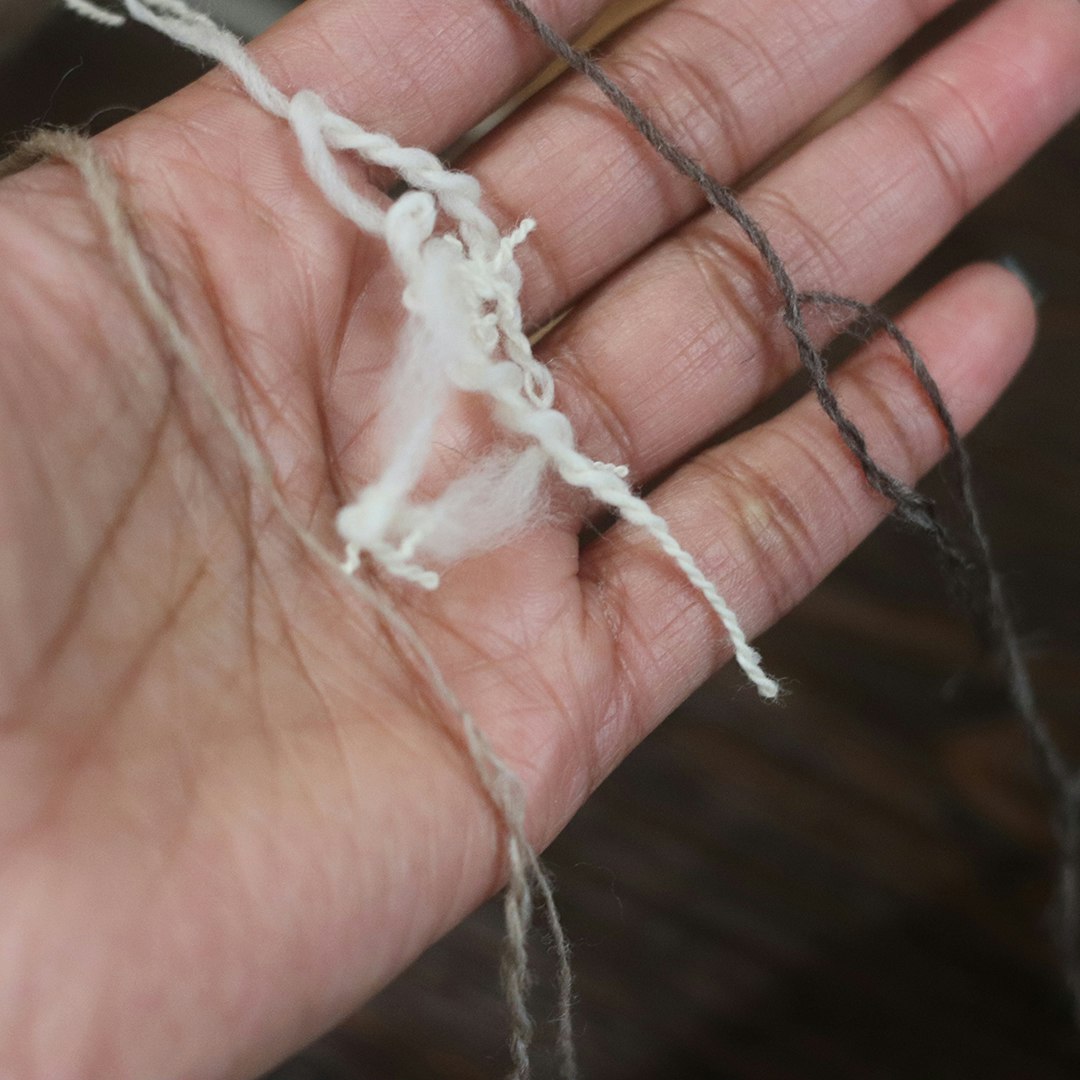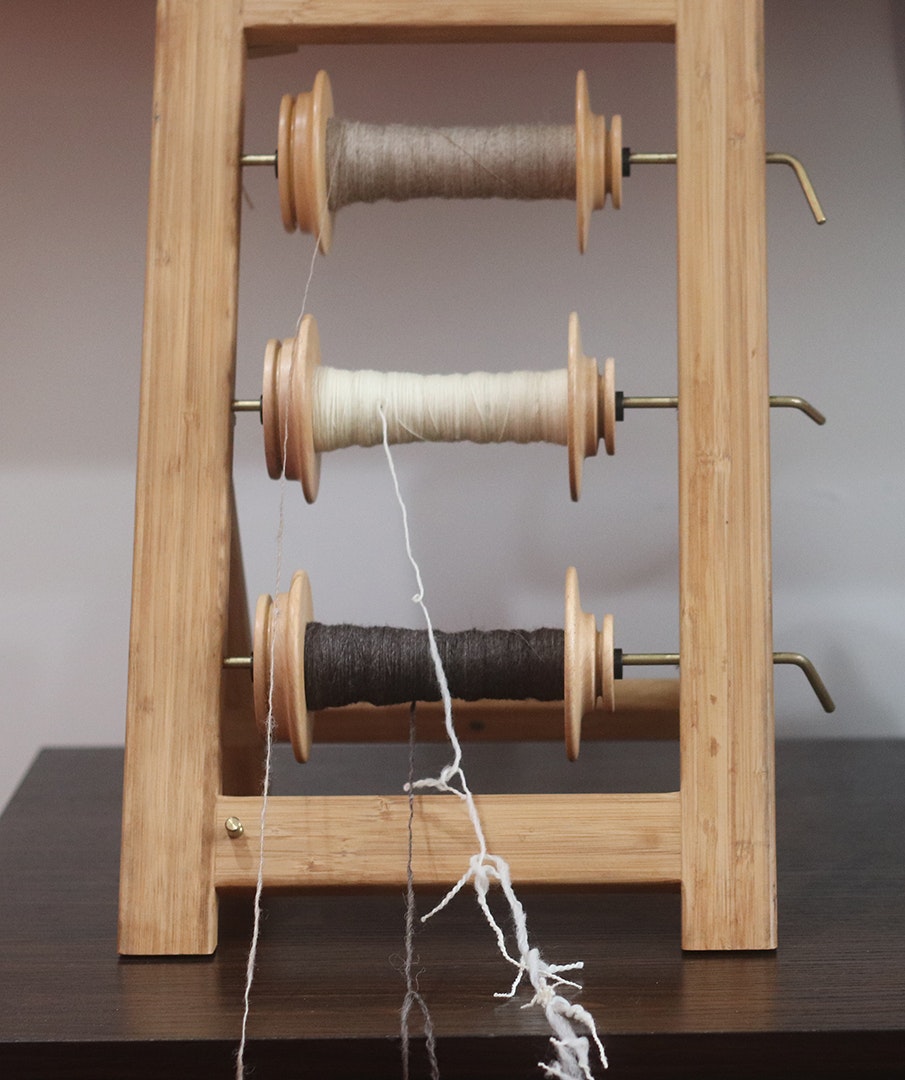Early in my spinning practice, I realized I could change the outcome of my yarn in the plying phase. I do not spin singles yarn for end use often, and therefore, plying takes center stage in my handspun yarns. Each plying experience is a report on my spinning. After I have spun my singles, I consider these factors: Did this single ply smoothly? Is my plied yarn strong, adequately twisted, and balanced? Plying a classic 2- or 3-ply yarn is a collaboration between ply twist, tension, and smooth, unobstructed singles.
I have always let my bobbins rest simply due to the fact that I enjoy spinning more than plying. I tend to spin my singles across multiple bobbins, so naturally, my bobbins rest as I work through my fiber supply. My go-to draft is short-forward draw, compressing out all the air and smoothing the fibers as I spin. This creates a thin, slick single, but it also produces enough twist energy to create pigtails. When I ply right away, without resting the singles first, the pent-up twist energy creates a stop-and-go momentum, which is not what I enjoy at all.

Energy in the singles ply back and cause pigtails to form.
The Test
For handspinners, it is good practice to experiment outside of the bobbin or box. It’s how we learn, how we improve, and most importantly, how we discover attributes that are most beneficial to the yarns we want to create. I decided to find out what it would be like to ply both fresh and well-rested singles. I chose 3 random fibers, all spun short-forward draw, and varied the days of rest before plying.
- Cormo, combed top in natural—Plied immediately after spinning
- Tasmanian Comeback roving in faun—Rested for 2 weeks
- Corriedale roving in chocolate—Rested for 1½ weeks
As I pulled the singles from the lazy kate and tied on my leader, I began to see the test results unfold almost instantly. The unrested, natural-colored single was much more energized than the faun or chocolate rested singles.

Emonieiesha noticed the difference right away between the freshly spun singles and the ones that were allowed to rest.
When to Rest
Here are 5 instances in which resting your singles may be worth the wait:
If you are spinning a very thin single that requires an adequate amount of twist, letting your bobbin rest will relax some of the twist and result in fewer pigtails during the plying phase.
When you are spinning a large amount of fiber, spinning all of your singles first will allow most of your bobbins to rest by default. But be sure to let that last bobbin rest, too, or when you start to ply the last bobbin spun with a more rested bobbin, you risk tangles and pigtails.
If you are not planning to ply your singles, give the yarn some time to relax some of the twist energy before finishing. It will make the yarn easier to manage off the bobbin.
Plying from a center pull ball can be a very fiddly method for some. Letting the singles yarn rest before plying is beneficial and will allow you to not have to fight with your singles as much while plying.
A rested bobbin will definitely provide a less energized single to work with as you tackle the loops and hand motions required when chain plying.
Emonieiesha Hopkins is a Chicago, Illinois, fiber evangelist. She loves to gather her wool and good fiber friends, any time, any place. Emonieiesha can be reached via www.hopkinsfiberstudio.com.

